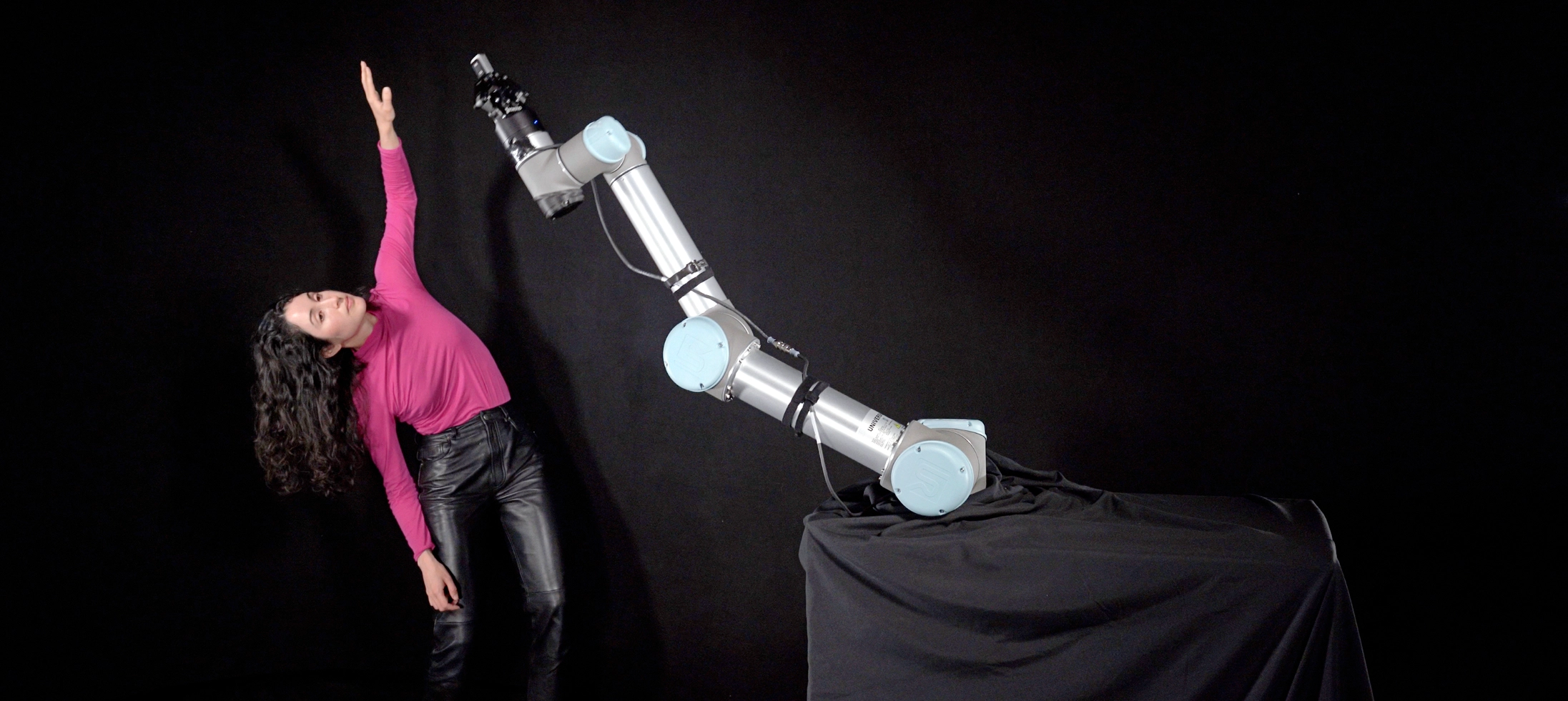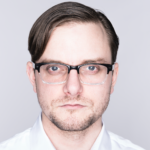Choreographer and Engineer Catie Cuan Shares the Ideas Behind Her Eight-Hour Duet With an Industrial Robot Arm
Dr. Catie Cuan received a PhD in mechanical engineering from Stanford in “choreorobotics,” the study of dancerly practice and robotic motion planning. Cuan has performed with robots for many years at venues such as the Smithsonian and Brown University, but her first public performance since graduation promises its own slice of choreorobotic virtuosity. She collaborated with influential roboticist and artist Ken Goldberg to create Breathless: Catie and the Robot, an eight-hour durational performance between Cuan and a robot arm, which will unfold on December 16 as part of the NationalSawdust+ series in Brooklyn, New York. The dance explores themes of labor and autonomy through the medium of a robot she helped code and her own body.
Dr. Cuan! Who are you and what do you do?
I’m a choreographer, dancer, engineer, and researcher. I make robots dance for a living. I’m currently a postdoctoral scholar in computer science at Stanford University, an artist-in-residence at the Exploratorium and Jacob’s Pillow, and I’m starting a company at the intersection of AI, robotics, and dance. Many of our technologies constrain our human movements in order to use them. This has a functional purpose—being able to type on a small keyboard on a constrained airplane, for example.
At the same time, though, we have such multifaceted, expressive bodies. I am excited by how robots present a three-dimensional interface for humans. The ways that robots move—and especially how they move relative to humans—are deeply choreographic questions. Choreorobotics has exploded in recent years as robots move out of industrial and research settings and into everyday ones.
You were recently awarded a PhD in mechanical engineering. How did that come about?
In 2017, I met Dr. Amy LaViers and then became the inaugural artist-in-residence at her Robotics, Automation, and Dance Lab. Years before, my dad experienced a stroke that revealed to me how physically alienating technology can be. It made me wonder why artists are not more involved in the development of new technologies that move and make noise. Through these two experiences, I realized I wanted to dance with robots for the rest of my career. I was admitted to Stanford, and transitioned from using robots exclusively in my artistic work to a fully research context. I also spent three years of grad school as the inaugural artist-in-residence at Everyday Robots, which was Google X/Alphabet’s robotics initiative at the time. This allowed me to work towards my PhD while also making artwork.
Where did the idea for your National Sawdust show come from?
Ken Goldberg, an artist and professor at the University of California, Berkeley, and I started with a simple idea. I would dance, we would run my movements through the motion-capture program, OpenPose, and then convert my motions into robot ones. We played those back on a UR5 industrial robot arm, so it could effectively imitate my motions. I would then improvise alongside the robot arm’s motions.
We discovered surprising synergy between rhythmic robot motions and my own movement in response. Ken and I refined the concept, and, just before graduating from Stanford, I suggested to Ken that I could perform this as a durational work where I would dance with the robot for eight hours. The durational nature of this piece fomented ideas about labor and the future of work. Ultimately, our goal is to highlight the poetry of labor and motion, and how humans may tire over time but are capable of much more nuance and expression than a robot.
What does a successful show look like to you?
I would love for people to examine their own movement capabilities, how rich and varied they are. The contrast between the human and the robot highlights just how remarkable our bodies are. I want people to witness the inherent beauty of a moving body—and how labor, as a storied, perennial manifestation of that movement, can be challenging, fraught, and glorious.





